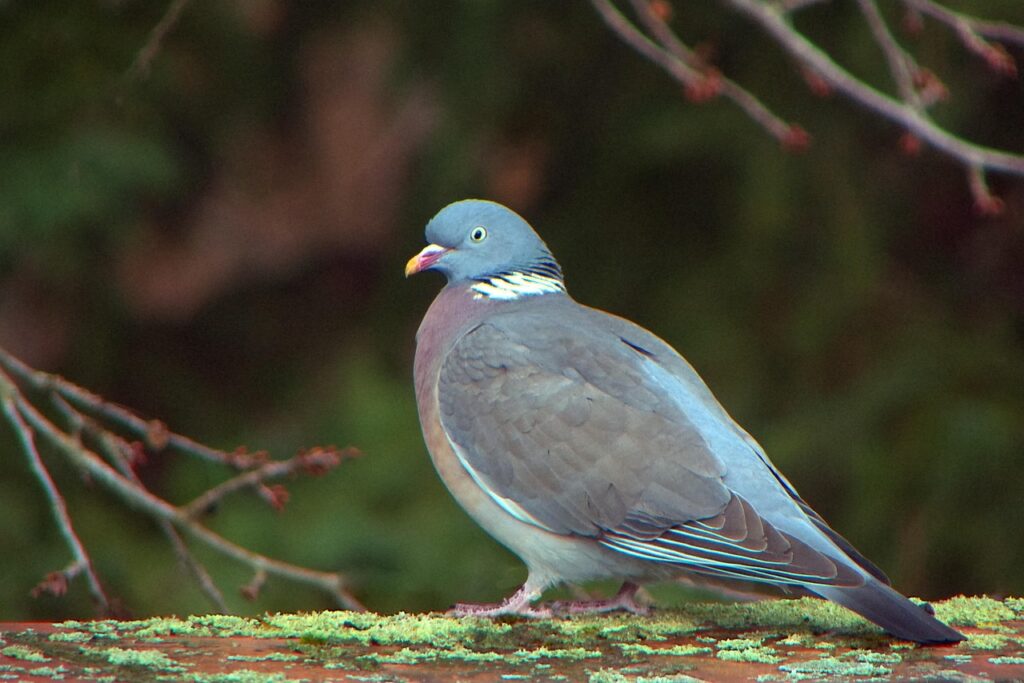Wood Pigeon (Ringduva)

Characteristics:
The Wood Pigeon is Sweden’s largest pigeon, measuring 40–45 cm in length with a wingspan of 75–80 cm.
It is easily recognised by its blue-grey plumage, pinkish breast, white neck patches (the “ring”), and white wing bars visible in flight.
The tail is grey with a dark tip, and the eyes are yellow.
Its call is a deep, rhythmic “hoo-hoo-hoo-hoo-ho”, repeated in short series.
Habitat:
The Wood Pigeon is found throughout Sweden, except in the far northern mountains.
It thrives in mixed forests, farmlands, parks, and gardens, and has become increasingly common in towns and cities in recent years.
Behaviour:
A cautious but peaceful bird, often seen feeding on the ground in open fields or lawns.
It lives in pairs during the breeding season, but gathers in large flocks in autumn.
During migration, the species forms visible flocks, often observed in October skies.
Diet:
The Wood Pigeon is mainly herbivorous, feeding on seeds, grain, berries, herbs, and acorns.
In spring and summer, it also eats insects and worms, especially for feeding chicks.
Reproduction:
Breeding occurs from April to August, and many pairs raise two or three broods per year.
The nest is a simple platform of twigs, usually placed in trees or on buildings.
The female lays two white eggs, incubated by both parents for 16–17 days.
The young are fed with “pigeon milk”, a nutrient-rich secretion produced by the parents, and fledge after 3–4 weeks.
Migration:
The Wood Pigeon is a partial migrant.
Most Swedish birds migrate to Western Europe (mainly France, the Netherlands, and Spain) in autumn, while southern populations remain year-round.
Distribution:
Occurs across Europe and western Asia.
In Sweden, it is very common and widespread, especially in farmland regions.
Hunting:
The Wood Pigeon is a game species in Sweden according to the Hunting Ordinance (Bilaga 1).
Hunting season: 10 August – 28 (or 29) February nationwide.
Hunting is usually carried out in farmland, forest edges, or beet fields.
Decoy hunting using pigeon decoys and hides is a common and effective method.
Firearm class (Sweden):
The species may be hunted with:
- Shotgun, typically using pellet size no. 5–7, or
- Rifle class 4 (permitted for birds and small game of this size).
Think for the hunting exam:
- Largest Swedish pigeon, with white neck patch and white wing bars.
- Common in farmland, woods, and towns.
- Eats seeds, berries, acorns, and crops.
- Nests in trees, 2 eggs per brood, often several broods per season.
- Partial migrant, winters in Western Europe.
- Game species – hunting season 10 August – 28 (or 29) February.
- Hunted with shotgun or rifle class 4.
- Decoy hunting with pigeon models is effective.
